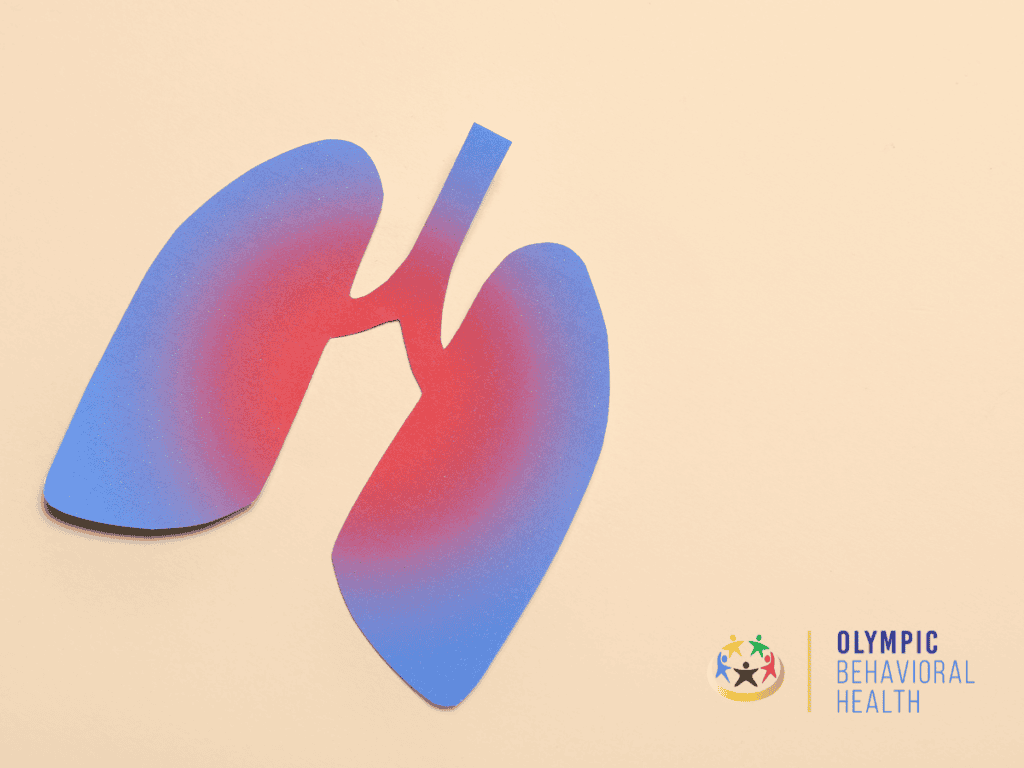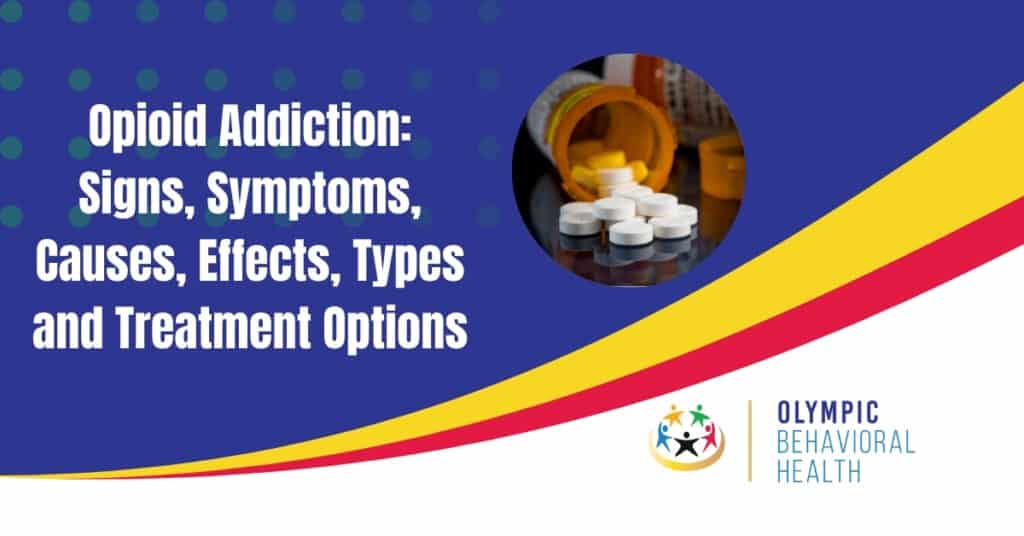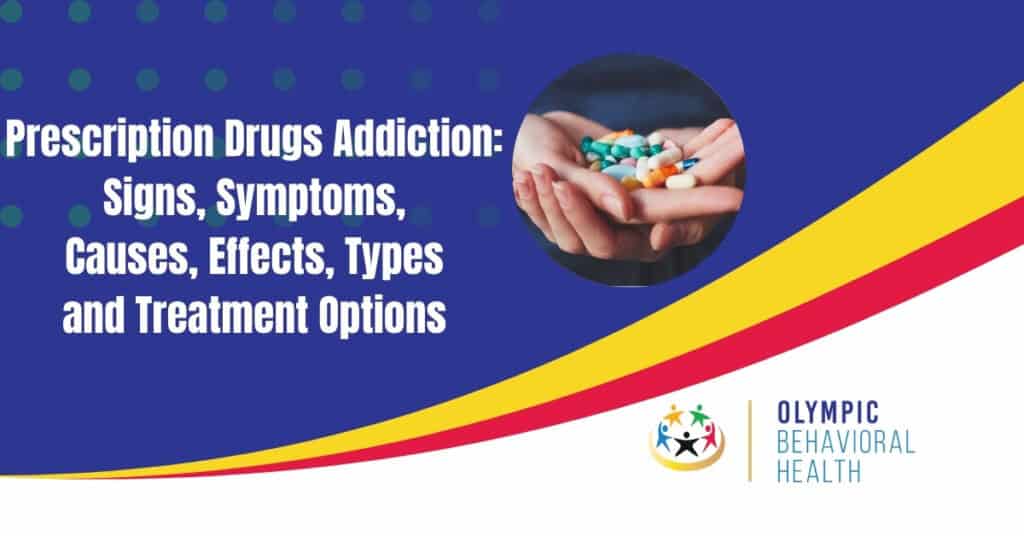Nicotine addiction is a prevalent form of substance addiction and often requires a multifaceted approach for effective treatment. Therapy for nicotine addiction typically involves a combination of pharmacological interventions, such as nicotine replacement therapy or medications like bupropion, along with behavioral counseling to address underlying triggers and habits associated with smoking.
Factors contributing to nicotine addiction include the highly addictive nature of nicotine itself, genetic predispositions, environmental influences, and social factors. Furthermore, symptoms of nicotine addiction can manifest in various ways, including cravings, irritability, anxiety, and difficulty concentrating, highlighting the complexity of the condition.
The effects of nicotine addiction extend beyond physical health, impacting various aspects of an individual’s life. Chronic smoking can lead to serious health complications such as cardiovascular diseases, respiratory issues, and an increased risk of cancer. Moreover, nicotine addiction can strain interpersonal relationships, impair cognitive function, and diminish overall quality of life. Recognizing these effects underscores the urgency of addressing nicotine addiction through evidence-based treatments and interventions tailored to individual needs.
What is a Nicotine Addiction?
Nicotine addiction is a compulsive need for nicotine, a chemical found in tobacco, that leads to continuous tobacco use despite its negative effects. It occurs when nicotine stimulates pleasure centers in the brain, causing individuals to seek more tobacco for temporary relief or satisfaction.
Higher doses are needed to achieve the same effect as dependence escalates, creating a vicious cycle. Nicotine addiction is associated with increased risks of cancer, cardiovascular diseases, and respiratory ailments. Withdrawal symptoms, such as cravings, anxiety, irritability, and difficulty concentrating, reinforce the addictive cycle.
Both physical and psychological factors drive nicotine addiction. Physiologically, nicotine binds to nicotinic acetylcholine receptors in the brain, triggering the release of neurotransmitters that regulate mood and behavior. Individuals may develop a habitual reliance on tobacco to cope with stress, anxiety, or other emotional states. Environmental and social influences, such as peer pressure or exposure to tobacco marketing, can also contribute to the development and perpetuation of nicotine addiction.
What are the Signs and Symptoms of a Nicotine Addiction?
Nicotine addiction can manifest through various symptoms, often making quitting challenging. Here are some common signs and symptoms of nicotine addiction:
- Requiring more tobacco to feel satisfaction: Indicates tolerance to nicotine, needing increasing amounts for the desired effect.
- Experiencing withdrawal symptoms, such as irritability: Withdrawal occurs when the brain doesn’t receive nicotine, leading to irritability and other symptoms.
- Using tobacco in larger amounts than intended: Shows loss of control over use, consuming more than planned.
- Having a desire to quit or decrease use but being unable to do so: Struggles due to nicotine’s addictive nature despite wanting to quit.
- Experiencing cravings and intense urges to use tobacco: Strong desire for tobacco despite knowing associated risks.
- Continued tobacco use despite awareness of consequences and health risks: Continues usage despite knowledge of harmful effects, indicating lack of concern or inability to stop.
- Physical symptoms:
- Trouble concentrating
- Anxiety and panic attacks
- Depression
- Trouble sleeping
- Irritability and frustration
- Increased appetite and weight gain
- Psychological symptoms:
- Cravings are triggered by situations or activities associated with tobacco use, like driving, drinking, stress, work, and after meals. These triggers can lead to cravings even without physical withdrawal symptoms.
These symptoms can vary in intensity and duration depending on the individual and their level of nicotine dependence.

What are the Causes of Nicotine addiction?
Nicotine addiction, often caused by the habitual use of tobacco and tobacco products, can be influenced by genetic predisposition, early exposure, environmental factors, and the brain’s response to nicotine. Here are the causes of nicotine addiction:
- The habitual use of tobacco and tobacco products, which are the primary sources of nicotine. Often tobacco addiction develops this way.
- Genetic predisposition to addiction can influence an individual’s vulnerability to developing nicotine dependence.
- Exposure to nicotine at an early age, particularly during adolescence, can increase the likelihood of developing an addiction later in life.
- Environmental factors, such as peer pressure or social influences, can contribute to the development of nicotine addiction.
- Nicotine’s ability to stimulate the release of pleasure-inducing chemicals in the brain, such as dopamine, can reinforce the habit of using tobacco products.
- The use of electronic cigarettes (e-cigarettes) or vaping devices, can also deliver nicotine and contribute to the development of addiction.
- The presence of other mental health conditions or substance use disorders can increase the risk of developing nicotine addiction.
- The use of tobacco products in stressful situations or as a coping mechanism, can further reinforce the habit and contribute to the development of tobacco addiction.
What are the Effects of Nicotine?
Nicotine consumption affects individuals in several ways, which contribute to why people consume it and why they may continue to use nicotine-containing products:
- Addiction: Nicotine is highly addictive. It affects the brain by triggering the release of neurotransmitters like dopamine, which create feelings of pleasure and reward. Over time, the brain becomes dependent on nicotine, leading to cravings and withdrawal symptoms when nicotine levels drop. This addiction cycle drives people to continue using nicotine-containing products.
- Mood Enhancement: Nicotine can temporarily improve mood and reduce stress and anxiety. This mood-altering effect can be enticing for individuals seeking relief from negative emotions or a boost in mood.
- Increased Alertness and Concentration: Nicotine can enhance cognitive function, including attention, concentration, and memory. This effect can make nicotine appealing to individuals looking to improve their focus and productivity, especially in demanding situations such as work or study.
- Appetite Suppression: Nicotine can act as an appetite suppressant, leading some individuals to use nicotine-containing products as a means of weight control or appetite management.
- Social and Behavioral Factors: Nicotine use often becomes intertwined with social activities or habits, such as smoking during breaks at work or socializing with friends who use nicotine products. These social and behavioral factors can reinforce nicotine consumption and make it harder for individuals to quit.
Overall, the combination of addictive properties, mood enhancement, cognitive effects, appetite suppression, and social factors contributes to why people consume nicotine and why they may find it difficult to stop using nicotine-containing products.
How Does a Nicotine Addiction Develop?
Nicotine dependence involves physical and psychological factors that make quitting tobacco difficult. Nicotine triggers dopamine release in the brain, akin to other addictive drugs, reinforcing its use. Smokers often rely on nicotine to modulate mood, relieve withdrawal symptoms, or both, leading to addiction. With continued use, the brain develops more receptors for nicotine, intensifying cravings and making cessation challenging.
What Happens in The Brain when Nicotine Is Consumed?
When nicotine is consumed, it stimulates nicotinic acetylcholine receptors in the brain, releasing neurotransmitters such as dopamine, glutamate, and gamma-aminobutyric acid. This activation of neurotransmitter release contributes to the complex actions of nicotine, including its addictive properties and the development of dependence.
Over time, the brain adapts to the increased signaling activity by reducing the number of acetylcholine receptors, leading to nicotine tolerance and the need for continued and increased nicotine intake. Additionally, nicotine exposure during adolescence can have long-term consequences on cognitive function and neuronal network function in the prefrontal cortex, potentially leading to cognitive deficits and psychiatric disorders later in life.
How Does the Body Become Dependent on Nicotine?
The body becomes dependent on nicotine through a process of physical dependence, which occurs when the body adapts to the presence of nicotine and requires it to function normally.
When nicotine is regularly introduced into the body, it affects the brain’s reward system by increasing the release of dopamine, a neurotransmitter associated with pleasure and reward. Over time, the brain adjusts to the increased dopamine levels caused by nicotine, leading to changes in the brain’s chemistry and function.
As the brain adapts to the presence of nicotine, it becomes less sensitive to natural rewards, and individuals may require higher doses of nicotine to achieve the same effects. This phenomenon is known as tolerance. Additionally, the body begins to rely on nicotine to maintain normal functioning, and when nicotine levels decrease, withdrawal symptoms occur.
What Are the Different Types of Nicotine Addiction?
Nicotine addiction manifests in two main forms: physical and psychological dependence. Physical dependence occurs when the body relies on nicotine to prevent withdrawal symptoms like restlessness and agitation. Psychological dependence involves feeling the need for nicotine as part of daily routine, such as using it to cope with stress or as a habit.
Physical
Physically, nicotine dependence is characterized by symptoms such as the urge to smoke soon after waking up, prioritizing the first cigarette of the day, and smoking at regular intervals. Nicotine releases dopamine in the brain, creating temporary feelings of pleasure and reinforcing the addiction. The body craves nicotine, leading to withdrawal symptoms when its use is stopped. This physical aspect of addiction is characterized by the body’s need for nicotine to function normally, and the presence of withdrawal symptoms like irritability, cravings, depression, anxiety, cognitive deficits, sleep disturbances, and increased appetite when nicotine is not consumed.
Physiological
These physiological effects of nicotine contribute to its addictive nature. Over time, the body develops a tolerance to some of these effects, leading to the need for higher doses of nicotine to achieve the same effects. This tolerance and dependence contribute to the difficulty in quitting tobacco use.
Physiological nicotine addiction also involves the development of withdrawal symptoms when nicotine levels in the body decrease. Withdrawal symptoms can include irritability, anxiety, difficulty concentrating, increased appetite, and intense cravings for nicotine. These symptoms typically peak within the first few days after quitting smoking and can persist for several weeks.
The physiological aspects of nicotine addiction can make it challenging for individuals to quit smoking. Even when individuals are motivated to quit for health or other reasons, the physical dependence on nicotine can contribute to relapse if withdrawal symptoms are not effectively managed.

What is the Risk of a Nicotine Addiction?
Nicotine addiction poses a significant risk, as it not only creates a pleasurable sensation but also makes quitting smoking challenging. Smoking tobacco increases the likelihood of developing various health issues, including cancer, stroke, heart disease, and lung disorders.
Nicotine, the primary addictive substance in cigarettes and other tobacco products, poses several health risks:
- Addiction: Nicotine is highly addictive, making it difficult for individuals to quit smoking or using other nicotine-containing products.
- Increased Heart Rate and Blood Pressure: Nicotine consumption leads to a temporary increase in heart rate and blood pressure. Over time, this can strain the cardiovascular system and contribute to the development of heart disease.
- Constriction of Blood Vessels: Nicotine causes blood vessels to narrow, leading to reduced blood flow to vital organs, including the heart and brain. This constriction increases the risk of heart attack and stroke.
- Hardening of Arteries: Chronic nicotine exposure contributes to the hardening and narrowing of arteries, a condition known as atherosclerosis. Atherosclerosis is a major risk factor for heart disease and stroke.
- Respiratory Effects: While often overshadowed by the risks of smoking, nicotine itself can have detrimental effects on the respiratory system. It can irritate lung tissue and contribute to respiratory conditions such as chronic bronchitis.
- Pregnancy Complications: Nicotine use during pregnancy is associated with several adverse outcomes, including low birth weight, preterm birth, and developmental issues in the newborn.
- Impact on Mental Health: Nicotine addiction can worsen symptoms of anxiety and depression in some individuals. Moreover, attempts to quit nicotine can lead to withdrawal symptoms, including mood disturbances.
- Potential for Harmful Delivery Methods: Nicotine is not only consumed through traditional cigarettes but also through alternative products like e-cigarettes and vaping devices. These products may contain additional harmful substances and pose unique health risks.
What Substances Contain Nicotine?
Nicotine is a highly addictive stimulant found in various substances such as cigarettes, cigars, shisha (hookah), vapes, nicotine patches, nicotine pads, and nicotine gum. These substances deliver nicotine to the body when consumed, and the tranquilizing effects of nicotine contribute to their addictive nature.
It is crucial to recognize these substances and their risks to make informed choices for personal well-being. Here are the well-known substances that contain nicotine:
Cigarettes: Cigarettes are the most common form of nicotine consumption. They contain dried and cured tobacco leaves rolled into a cylindrical paper wrapper. When lit and smoked, the burning tobacco releases nicotine, which is rapidly absorbed into the bloodstream through the lungs. Cigarette smoking is highly addictive and linked to numerous health risks, including lung cancer, heart disease, and respiratory problems.
Cigars: Cigars are made from fermented and aged tobacco leaves rolled into a cylindrical shape. Like cigarettes, cigars contain nicotine, which is absorbed into the bloodstream when smoked. However, cigars generally deliver higher levels of nicotine than cigarettes. Regular cigar smoking is associated with an increased risk of various cancers, heart disease, and other health issues.
Shisha (Hookah): Shisha, also known as hookah, involves smoking flavored tobacco through a water pipe. The tobacco mixture contains nicotine, which is inhaled along with the smoke. Shisha smoking is often perceived as less harmful than cigarettes, but it can lead to nicotine addiction and increase the risk of lung diseases and other health problems.
Vapes (E-cigarettes): Vapes, or e-cigarettes, are electronic devices that heat a nicotine-containing liquid (e-liquid) to produce an aerosol that users inhale. The nicotine in vapes is derived from tobacco plants or synthesized in laboratories. While marketed as a safer alternative to traditional cigarettes, the long-term health effects of vaping are still being studied, and it can lead to nicotine addiction.
Nicotine patches: Nicotine patches are a form of nicotine replacement therapy (NRT) used to help smokers quit. The patches are applied to the skin and release controlled amounts of nicotine into the bloodstream, helping to alleviate withdrawal symptoms and cravings. Nicotine patches are generally considered safer than smoking, but they can still cause side effects and should be used under medical supervision.
Nicotine pads: Similar to nicotine patches, nicotine pads are transdermal nicotine delivery systems that release nicotine through the skin. They are used as a smoking cessation aid and provide a controlled dose of nicotine to manage withdrawal symptoms and cravings.
Nicotine gum: Nicotine gum is another form of NRT that delivers nicotine through the oral mucosa when chewed. It provides a quick release of nicotine to help manage cravings and withdrawal symptoms associated with quitting smoking. Nicotine gum should be used as directed and under medical supervision.
How Can You Stop a Nicotine Addiction?
To stop a nicotine addiction, consider nicotine replacement therapy options such as patches, gum, or prescription medications like bupropion or varenicline. Engaging in physical activities can also help distract from cravings. Moreover, avoiding triggers and seeking support from helplines or counseling services can be beneficial in overcoming nicotine addiction.
One of the reasons why it is difficult to quit smoking is that cigarettes are designed to provide a quick and intense release of nicotine to the brain, which is highly addictive. Nicotine binds to receptors in the brain and causes the release of dopamine, a neurotransmitter associated with pleasure and reward.
This immediate reward reinforces the habit and makes it very difficult to break. Nicotine withdrawal symptoms can include irritability, anxiety, insomnia, and difficulty concentrating, among others.
How Do You Stop Smoking?
To stop smoking, try nicotine replacement therapy, avoid triggers, delay cravings, chew gum, clean your environment to remove the smell of smoke, and engage in relaxing activities like meditation or deep breathing exercises. Further, seek support from quit-smoking counselors, quitlines, or online resources, and make a plan for your quit day and beyond to stay motivated and focused on your goal of quitting smoking.
How Do You Stop Using Nicotine?
To stop using nicotine, remind yourself that cravings will pass and avoid triggers associated with tobacco use. Substitute smoking with activities like chewing sugarless gum or hard candy to keep your mouth busy and reduce the psychological need to smoke.
Effective ways to manage nicotine withdrawal include avoiding situations linked to smoking, substituting tobacco with healthy snacks, and engaging in activities that keep your mouth busy. Additionally, seek support from quit smoking helplines and counselors to cope with withdrawal symptoms and cravings.
What Are the Withdrawal Effects of Nicotine?
Nicotine withdrawal symptoms include cravings, irritability, and restlessness, which often arise due to the sudden absence of nicotine in the body. Cravings are intense urges to smoke that can be triggered by various cues or stressors. Irritability and restlessness are common mood disturbances experienced during nicotine withdrawal, making it challenging for individuals to remain calm and focused. These symptoms typically peak within the first few days after quitting smoking and gradually diminish over time as the body adjusts to nicotine cessation.
What are the similarities and differences between Nicotine Addiction and Cannabis Addiction?
Nicotine addiction and cannabis addiction share the common feature of being substance dependencies. Both can lead to withdrawal symptoms, cravings, and negative impacts on physical and mental health. However, cannabis addiction signs and symptoms may include impaired coordination and difficulty concentrating, while nicotine addiction may lead to increased heart rate and anxiety.
What are the Similarities and Differences Between Nicotine and Hallucinogen Addiction?
Nicotine and hallucinogen addiction both lead to dependence and withdrawal. However, the signs and symptoms of hallucinogen addiction are characterized by distorted perceptions and disorganized thoughts, while nicotine addiction is marked by physical cravings and irritability. Both addictions require professional intervention for effective treatment.
What Are Treatment Options that Help with A Nicotine Addiction?
According to Herman, Aryeh I. and Mehmet Sofuoglu’s 2010 study ‘Comparison of Available Treatments for Tobacco Addiction’ published in Curr Psychiatry Rep, seven FDA-approved medications, including five nicotine replacement therapies (NRTs), bupropion, and varenicline, are effective for smoking cessation. These treatments increase the chances of quitting smoking by two- to threefold, supporting their use in motivated smokers.
Treatment options for nicotine addiction encompass both pharmacological interventions and behavioral therapies. Pharmacotherapies approved by the FDA include various forms of nicotine replacement therapy (NRT), such as patches, gum, lozenges, sprays etc nicotine products, and prescription medications like bupropion and varenicline.
NRTs function by stimulating brain receptors affected by nicotine, thereby alleviating withdrawal symptoms and cravings. Combining NRT with behavioral therapies, like cognitive behavioral therapy (CBT), has shown enhanced efficacy in aiding smoking cessation.
Additionally, medications like varenicline help release chemicals in the brain similar to those released during smoking, further aiding cessation efforts. Emerging treatments such as transcranial magnetic stimulation (TMS) are also being explored for their potential in addiction treatment, although further research is needed to determine their effectiveness.
Furthermore, repurposing existing medications and investigating novel approaches like nicotine vaccines and acupuncture show potential for expanding treatment options and improving cessation outcomes. Integrating counseling and support systems, including helplines and community resources, complements pharmacological interventions by addressing behavioral aspects of addiction and providing ongoing support during the cessation process.
FAQ

Share This Post



